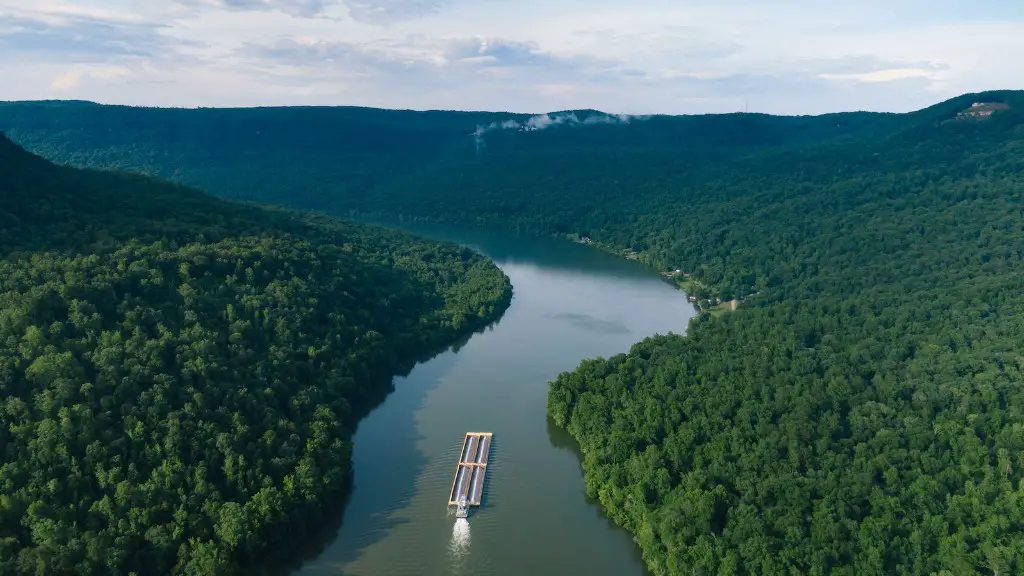Background Information
The Mississippi River Watershed is the fourth largest drainage basin system in the world, covering an area of 1.2 million square miles. This shows how significant and expansive the river system is. The Mississippi River Watershed Basin is definitively shared by 31 US states and two Canadian provinces, stretching a total of nearly 2,400 miles. It is fed by a vast array of streams, rivers and lakes and the varying terrains and even nearby oceans that enable its resources. This particular basin is very well-known due to its deep historical, cultural and economic significance.
Flow of the River
The Mississippi River originates at Lake Itasca in Minnesota and flows through the US Midwest into The Mississippi Delta, which eventually leads into the Gulf of Mexico. It is an important trade route and a key transportation system. Its waters help in sustaining the many diverse types of wildlife and the agricultural activities of the humans living in the watershed. In its natural state, the Mississippi River and its tributaries contribute significantly to the reduction of floods in various parts of the US and serve as a long, clean water source.
The Consequences of Human Activity
Although the Mississippi River Watershed is home to vast amounts of life, it is unfortunately being polluted by industrial and agricultural runoff. Additionally, significant modifications have been made to the river including artificial levees, navigation canals, dams and other structures for irrigation. These practices have had vast implications for the ecosystem, whether it be damaging existing natural habitats, or altering the natural floods of the river.
Environmental Challenges
Due to the enormity of the Mississippi River Watershed and the far-reaching effects of it, the dangers brought by human impact have begun to reach across the whole of the region. The amount of river sediments that has been pushed into the Gulf of Mexico has caused a decrease of oxygen in the water and intensified flooding in some areas. The contamination of the water provides inadequate nutrition for the local wildlife, which in turn disrupts their migration patterns, affecting the food chain and their reproductive cycles.
Solutions and Conservation
Various environmental organizations have come together in an attempt to restore and preserve the welfare of the Mississippi River Watershed. Many parties involved have deliberated and strived for policy change, from what agricultural processes are used to how much water is allowed to be taken out of rivers and lakes. Although there is still plenty of work to be done, conservationists have found success in some movements, such as the establishment of green infrastructure projects which aimed to reduce stormwater overflows. Furthermore, governments are beginning to invest in more effective waste management systems and raising awareness in order to educate the public on much-needed changes that have to be made.
Alternative Energy Sources
In order to reduce pollution in the Mississippi River Watershed and the discharges of greenhouse gases that accompany it, alternative energy sources are being proposed and implemented. Solar, wind and hydroelectric power systems would provide clean and renewable energy, while lowering our dependence on fossil fuels. There are initiatives being proposed in the hope of developing natural gas and hydropower plants, while harvesting the potential geothermal and biomass resources in the region.
Restoration and Enhancement Projects
Restoration and enhancement projects are being developed in order to repair the damage that has been done. Nature is being given back its natural incline to the river and its governing cyles, and changes are being made to compensate for fluctuations in the water levels. Projects such as these look to recover the natural habitats of the River Basin by reducing erosion, increasing biodiversity, and rejuvenating the river’s aesthetic.
Improved Conservation Practices
Realizing the need for more effective conservation practices, many parteners have come together in order to make use of better land management and water conservation strategies. Improved conservation practices have been established throughout the region, from reforestation to the reintroduction of certain species of wildlife. These consverations practices extend to insititutions, including the implementation of environmental management systems for businesses, organizations and even entire cities.
Conservation Through Education
Schools, universities and even governmental institutions have begun to recognize the importance of environmental education and its effects on the future of the Mississippi River Watershed. This includes teaching children the importance of clean water, air, and soil, and from there, learning the relevance of conservation and effective sustainability. Through educating the public and informing them of the current state of the environment, another layer of conservation can be established by aware citizens.


